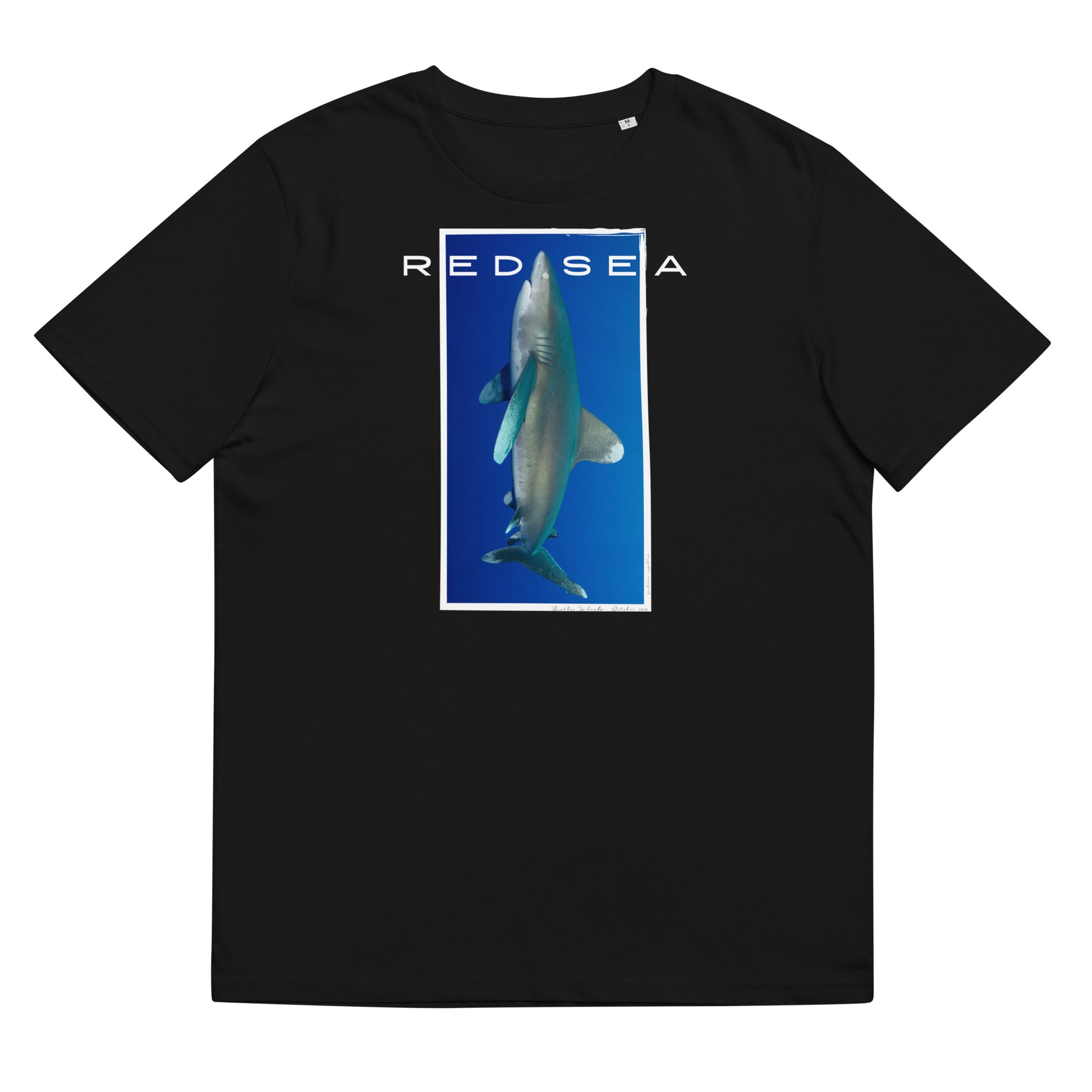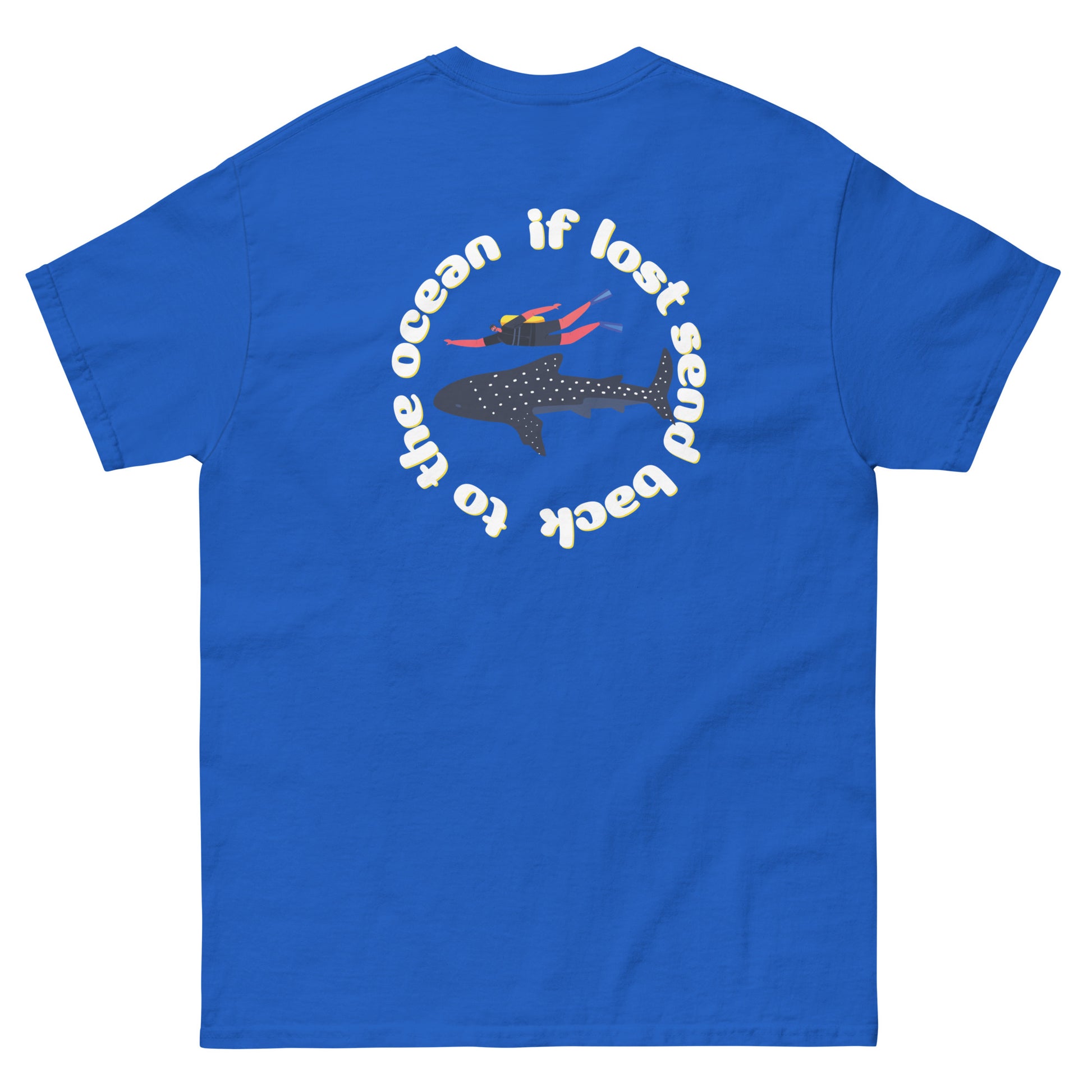The oceanic whitetip shark (Carcharhinus longimanus), also known as the longimanus shark, is a shark reaching a maximum length of 4 meters and weighing around 170 kilograms. These sharks are easily identifiable by their large and rounded dorsal fins and long, broad pectoral fins (hence the name longimanus) with white tips.
These sharks have a rounded snout and possess between 13 and 15 triangular teeth in each jaw, with the upper teeth being larger than the lower ones.
Diving with oceanic whitetip sharks in the Bahamas
The upper side of the longimanus is dark gray with blue and brown tones, and the belly is white, although sometimes it displays yellow hues. Another way to identify this shark is that it is almost always accompanied by pilot fish (Naucrates ductor) with which it has a mutualistic relationship. These fish remove parasites from the shark and get food from the scraps it leaves behind.
T-shirts for Shark Lovers
SEE MORE SHARK T-SHIRTSThe oceanic whitetip shark is a species of deep waters that inhabits depths of up to 150 meters and often approaches coastal areas on oceanic islands.
Distribution of the longimanus shark

The oceanic whitetip shark is a pelagic animal that undertakes long migrations. We can find longimanus sharks between latitudes 45 ° north and 43 ° south: in the western Atlantic, from the USA to Argentina; in the Gulf of Mexico and the Caribbean; the eastern Atlantic, from Portugal to the Gulf of Guinea; in the Indo-Pacific in the Red Sea, where they are very popular; in the Pacific in Hawaii, Samoa, Tahiti, southern California, and the Galápagos Islands. It inhabits waters between 20 and 28°C.
Whitetip shark feeding
The oceanic whitetip shark feeds on bony fishes, including tuna, manta rays, sea turtles, seabirds, squids, crustaceans, mammals, and even carrion. One of the most interesting aspects of the behavior of the oceanic whitetip shark is its association with short-finned pilot whales (Globicephala macrorhynchus), with which they have been observed swimming together. It is believed that this relationship benefits the shark as it scavenges the remains of the large squid left by the whales.
Behavior of these sharks towards humans
This is an active shark, nearly fearless, and often associated with human attacks. It is considered that this shark is potentially dangerous, almost as much as great white sharks, tiger sharks, and bull sharks, especially for divers in open waters. Longimanus sharks can be very aggressive and unpredictable in the presence of potential prey.
Conservation Status
The longimanus shark is classified as vulnerable on the IUCN Red List of Threatened Species. Studies indicate that in less than 40 years, the longimanus population has declined by 70% in the Atlantic. This shark is caught for its fins for soup preparation as well as for its meat, which is sold fresh, frozen, smoked, salted, or dried in Asian markets. Its skin is also used for leather preparation, and its liver oil is utilized. The vulnerability of this shark also lies in its believed low reproductive capacity.























